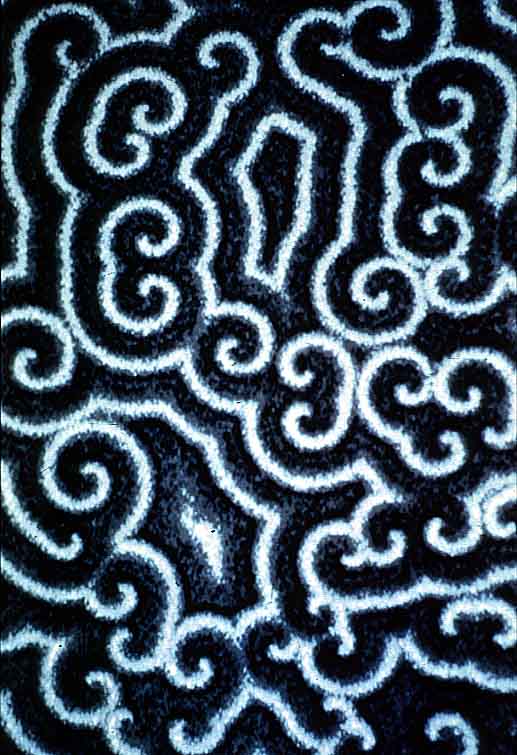Summarizing and Going Beyond ...
Here are some of the interesting/important ideas that we think come out of experiencing and thinking about the world of Langton's ant ...
- Quite sophisticated behavior can result from simple interactions of simple things.
- One can often usefully and relatively rigorously distinguish two general classes of emergent systems
- deterministic
- non-deterministic
- One can often usefully and relatively rigorously distinguish four aspects of emergent systems
- Agents
- Environments
- Observers/participants
- Creator/architect/designer
- Changes in behavior can occur with no change within an agent, resulting instead from changes in the environment.
- Changes in the environment can be produced by an agent as well as by an observer
- A bidirectional relationship between an unchanging agent and an environment modifiable by the agent can produce behaviors that an observer may see as "purposive" even in a simple deterministic system.
- Behaviors that appear "purposive" to an observer do not depend on any representation of the "purpose" within the agent.
- Systems that exhibit "purposive" behavior need not depend on any conception of that "purpose" in the mind of a creator/architect/designer
- Signs of "purpose", and even systems that exhibit what an observer would characterize as "purposive" behavior, can come into existence simply because of indeterminate processes, ie need not involve minds at all.
- That a world does things that are surprising to an observer does not establish whether it is deterministic or not.
Here are some places to further explore Langton's ant ...
- Travels of an ant: mathematical mysteries in the trails of virtual ants, from Science News, October 28, 1995 (Ivars Peterson)
- Langton's Ant, from mathworld.wolfram.com, with comments/references providing context in mathematical theory
- Virtual Ant, from Steve Witham, an implementation running in a larger arena and with a variety of preset environmental patterns at the start
- Langton's Ant, from Pat's Mathematics Website, allows one to explore patterns that result when the number of environment location colors is greater than two, and to quickly see what instructions/color sets lead to roads
- Generalized Ants, from Scott Sutherland, some history and links to programs
And to explore complex systems/emergence generally ...
- Complex Systems, from Serendip
- Emergence Working Group, from Center for Science in Society
- Exploring Emergence, from Mitchel Resnick and Brian Silverman, an on-line "active essay"
- Emergence, from Wikipedia
- Emergence: The Connected Lives of Ants, Brains, Cities, and Software, a book by Stephen Johnson, 2001
- A New Kind of Science, from Stephen Wolfram
And to think more about "purpose" ...
Paul Grobstein with the Summer 2005 Serendip/SciSoc group. Applets created with
NetLogo by Rebekah Baglini, building on
earlier work
by Panama Geer.
Continuing conversation
(to contribute your own observations/thoughts , write Serendip)
Unable to connect to database |
| On-Line Forum
| Complex Systems | Serendip Home |
Send us your comments at Serendip

© by Serendip 1994-
- Last Modified:
Wednesday, 02-May-2018 10:51:07 CDT



